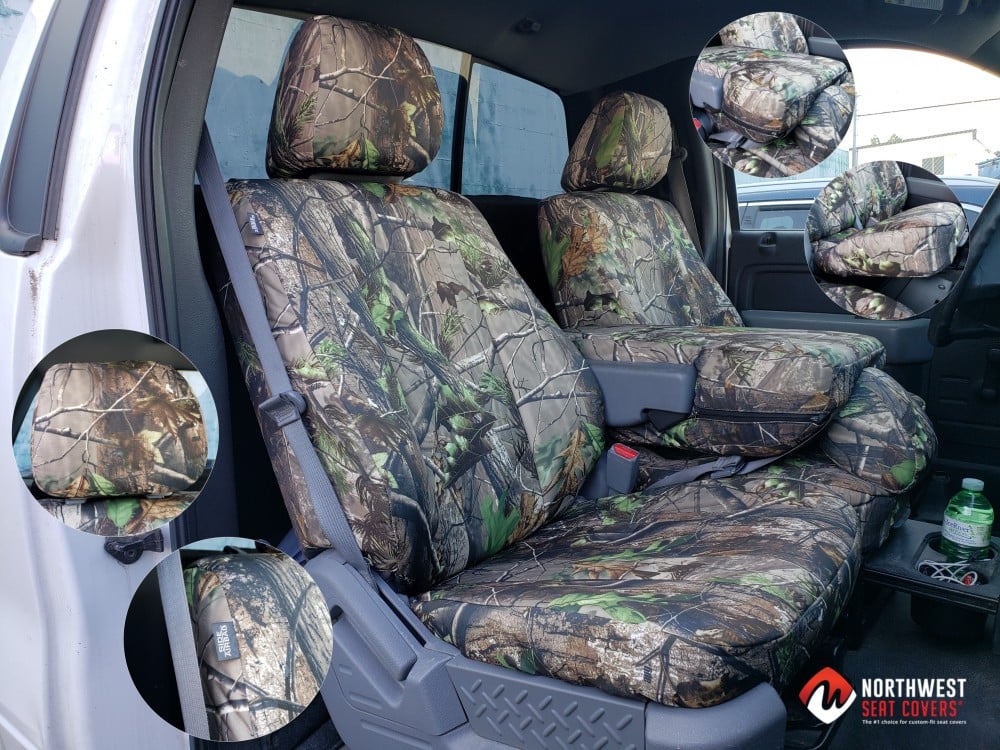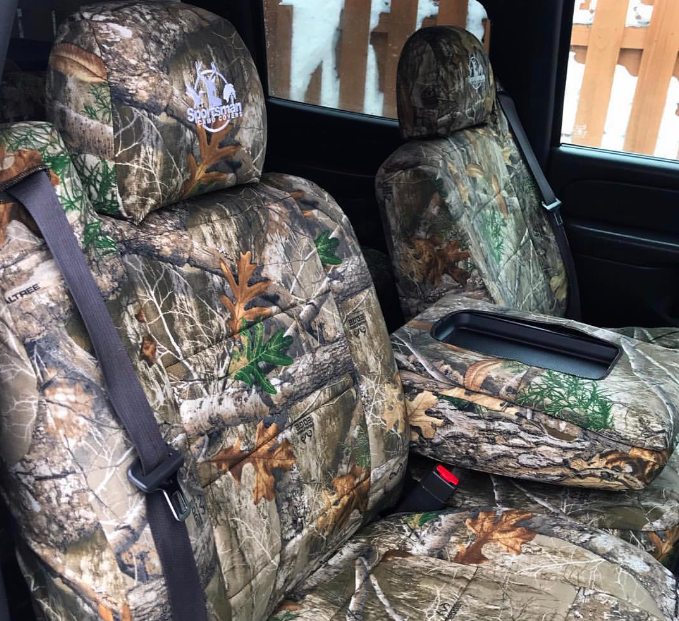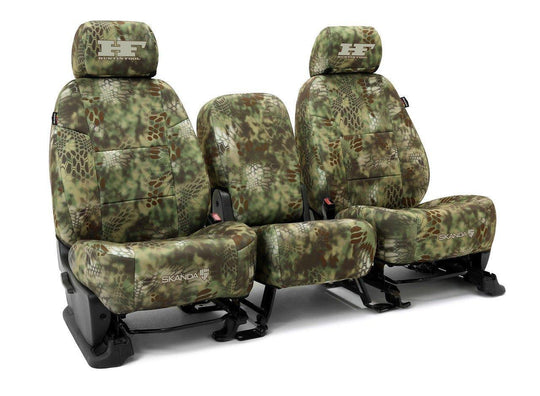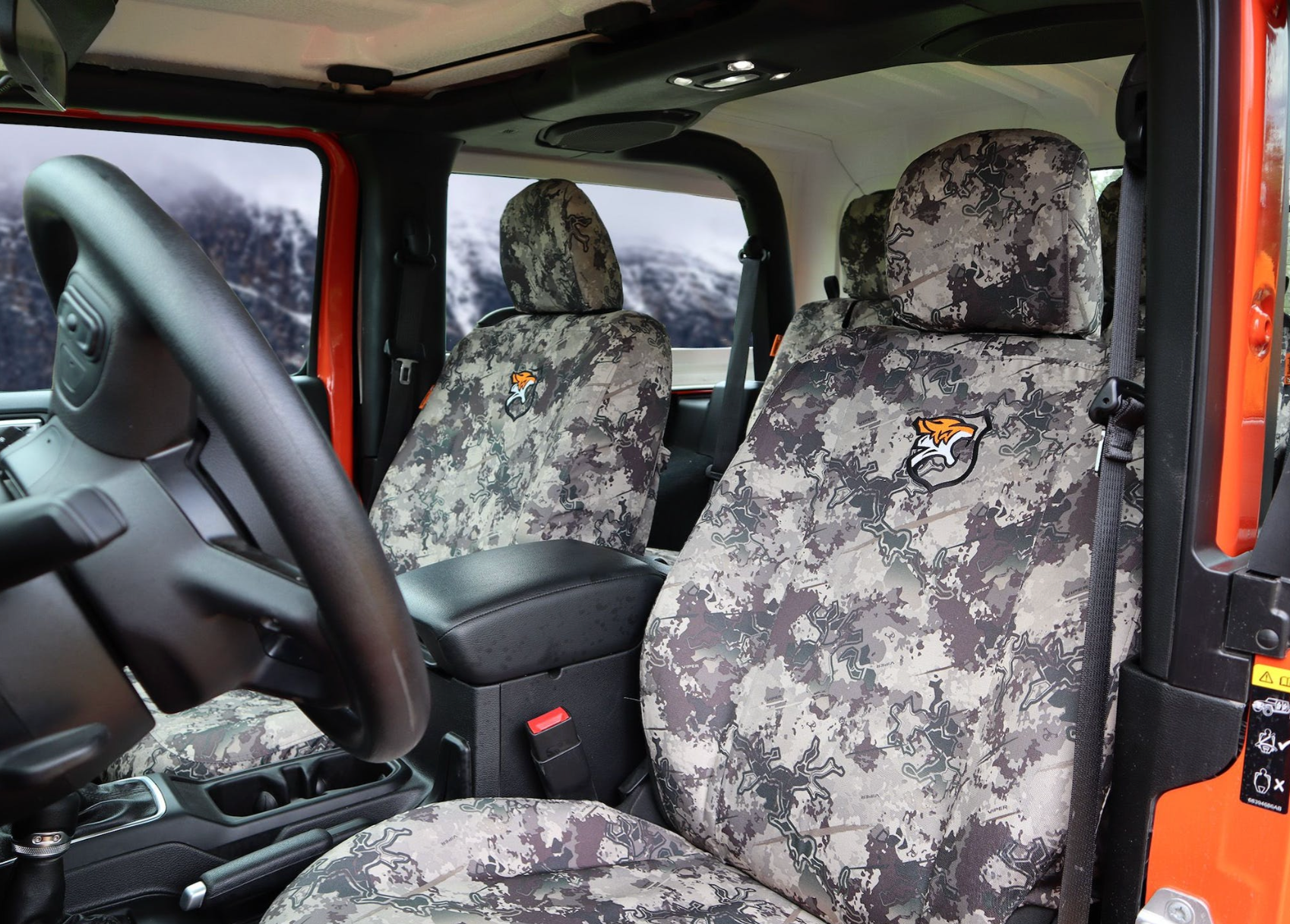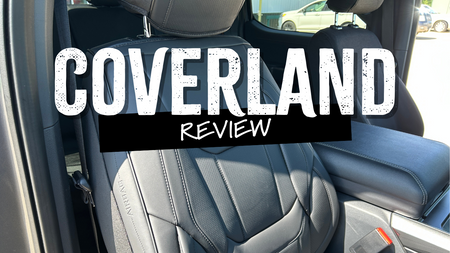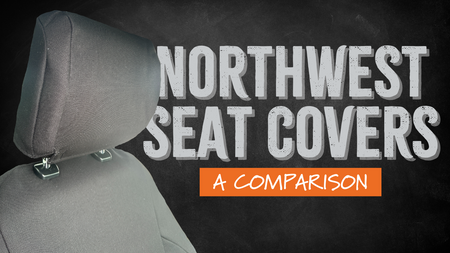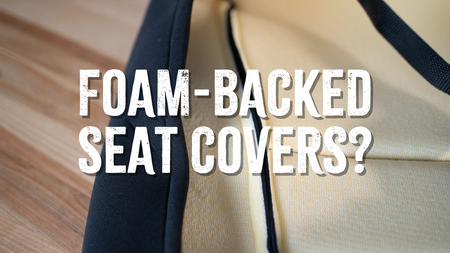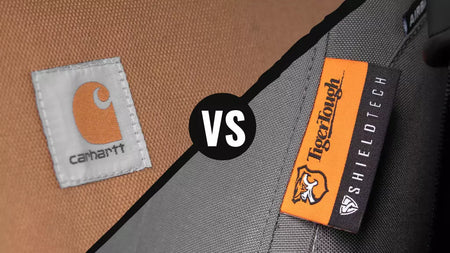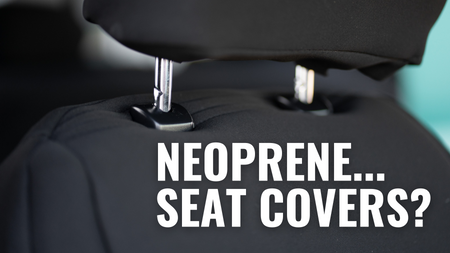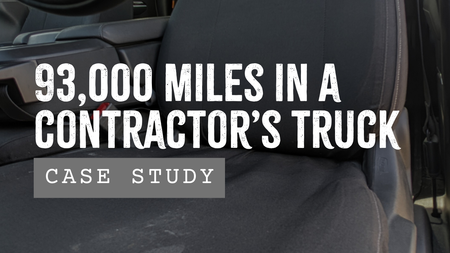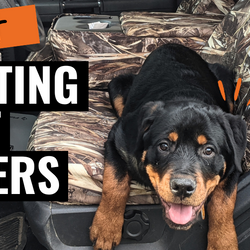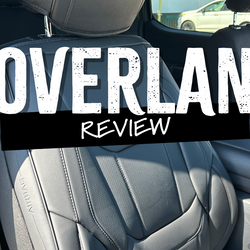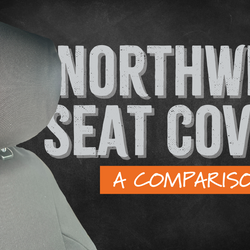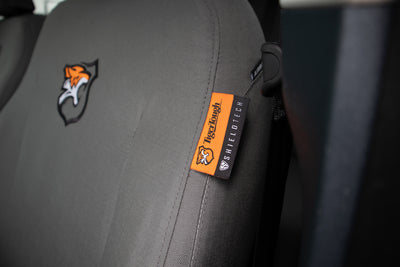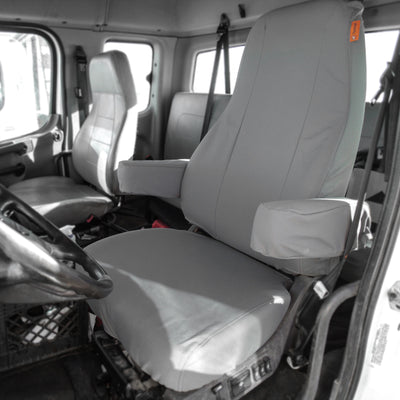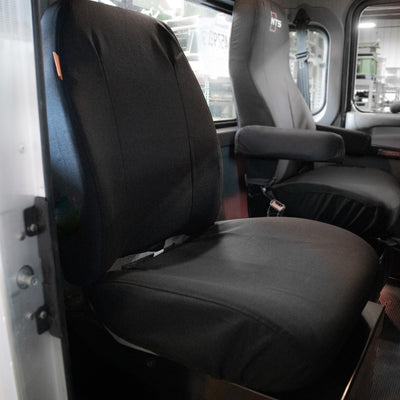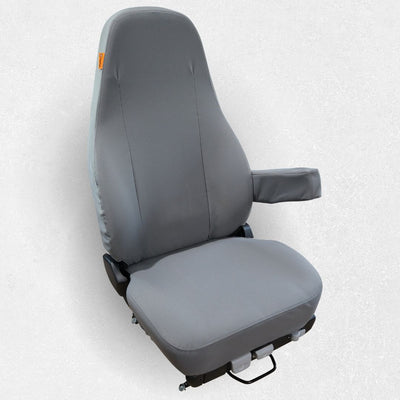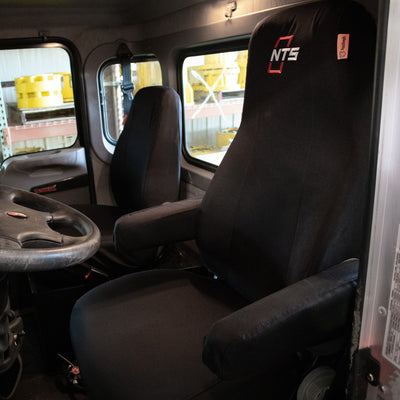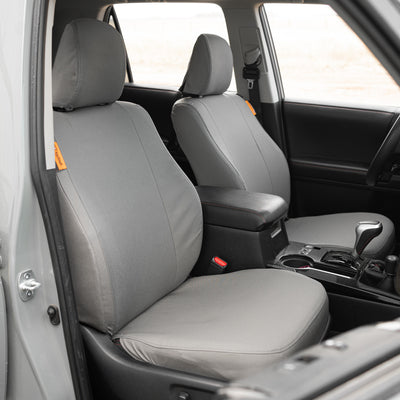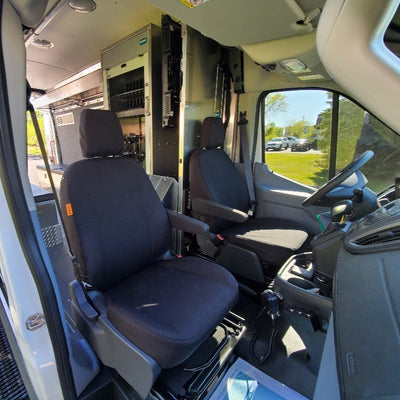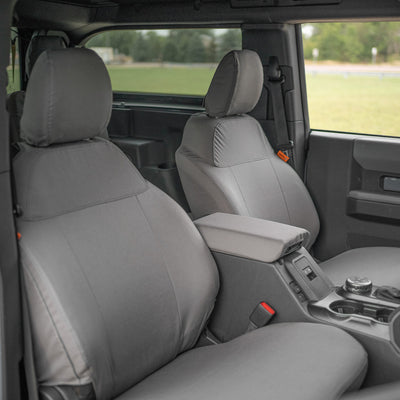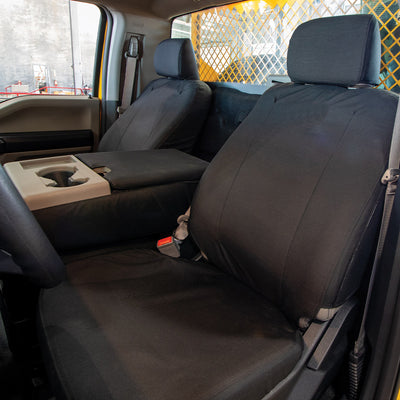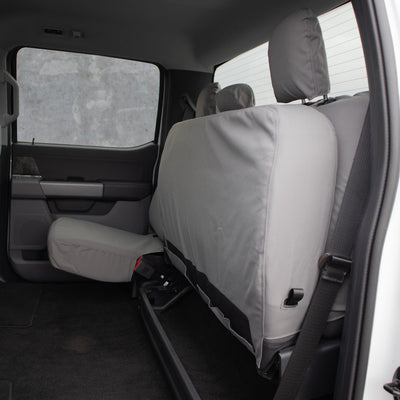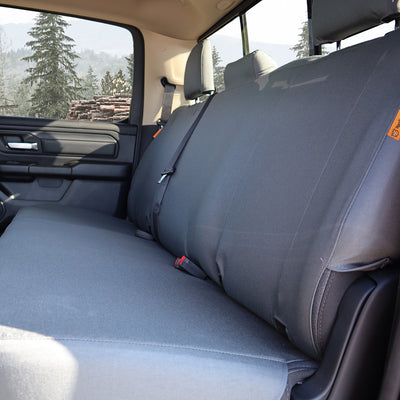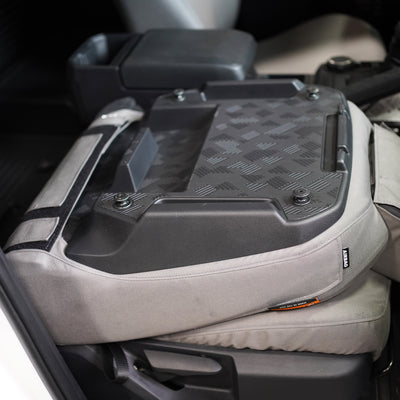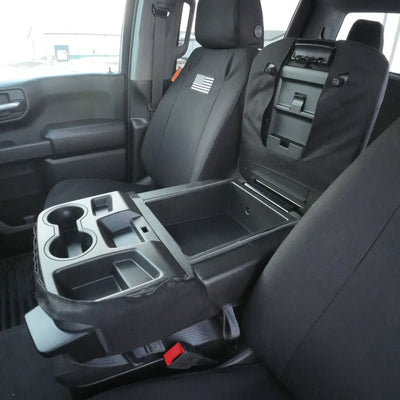When we researched top seat covers for work trucks, we didn’t just pick the ones at the top of Google. We asked blue-collar men and women what kinds of covers they’ve tried in their trucks, and this is the list they came up with:
Covercraft Endura PrecisionFit
Covercraft Carhartt SeatSavers
Wet Okole
Marathon
Canvasback
ShearComfort CORDURA®
VERTEX OFF-ROAD
TigerTough
Since we’re comparing covers for work trucks, we used a 2023 Ford F150 regular cab for pricing and research. Let’s get right into highlighting these seat-savers.
Note: Covercraft regularly adjusts its ARV to reflect different sales percentages. The prices we show here are their retail prices at the time of publication.
Covercraft Endura PrecisionFit

It’s nearly impossible to Google truck seat covers without Covercraft popping up. We give them credit. They’ve been in the business for over 50 years and have a great product with a stellar reputation.
They make seat covers and covers for cars, boats, RVs, airplanes, and patio furniture. First, let's take a look at the Endura PrecisionFit.
The fabric for the Endura PrecisionFit is vague. According to the description, it’s a canvas-nylon-polyester blend. But what does that mean? We contacted customer service to learn more, and they didn’t elaborate beyond the product description. It’s tough to know how durable their covers are without knowing more about the fabric.
Price: $334
Pros
✅ Waterproof
✅ Airbag-safe
✅ Works with heated and cooled seats
✅ Fits factory seats perfectly
Cons
❌ Fabric is uncertain
❌ Only a limited warranty available
Verdict
This is a great seat cover, and we don’t think you’ll be disappointed. But it’s at the top of the price range for a set of bucket seat covers for a 2023 Ford F150 Regular Cab. If you can get them on sale, they might be a worthwhile investment, but we can’t say for how long without knowing more about their material.
Covercraft Carhartt SeatSavers

Everyone loves Carhartt. We get it. Their reputation is undeniable. They've got that classic look of your grandpa's favorite jacket; overall, we feel nostalgic about them. The brand has been around since 1889 even though Covercraft Carhartt SeatSavers are newer to the market, so let's look at how these cover stand up to some others.
Price: $379
Pros
✅ Great reputation
✅ You know exactly what you're going to get
✅ Air-bag safe
Cons
❌ Limited colors
❌ Not waterproof
❌ They don't stay in place
❌ Not as durable as other seat covers
Verdict
While we have a lot of respect for Carhartt, when it comes to choosing seat covers, we’d actually lean towards Covercraft’s Endura PrecisionFit over the Carhartt SeatSavers. It's not just about the price; the PrecisionFit covers just seem to fit better and provide more value. If you’re into a variety of colors, you might find the two-color options of these covers a bit limiting. And the two-piece design? It tends to slide around on the seat because of how it's fastened. Since these are an expensive choice, we really hoped for a bit more from them.
Read Covercraft Carhartt vs. TigerTough Seat Covers
Wet Okole
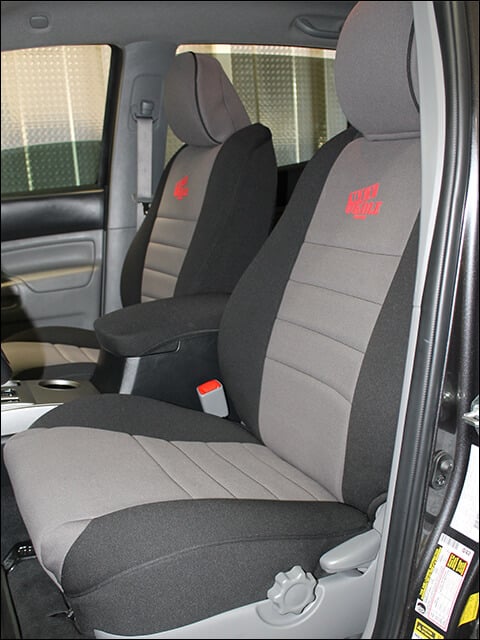
Okay, we know what you’re thinking…this is about work truck seat covers, and most of us aren’t driving around Baywatch trucks. Yep, this is a wet suit in seat cover form. We didn’t think it would be a fair comparison either, but after hearing from multiple people in the construction industry who love their Wet Okole seat covers, we decided to give these a fair shake.
Since they’re made from wetsuit neoprene and bonded with nylon, they’re waterproof and totally safe on vehicle seats. We'll take a look at their standard seat covers without a console cover.
Brent Fox, a contractor in the Nashville area, can speak to the durability. "I had Wet Okole in the truck I just retired. Rode on them for 12 years and, at some point, sent them back for a refurb. They were a great product and an easy company to work with."
Price: $402
Pros
✅ Easily washable
✅ Self-extinguishing
✅ Airbag safe
Cons
❌ Only a 90-day warranty
❌ No returns accepted
Verdict
These seat covers really do a solid job of protecting the seats in your work truck, almost like a wetsuit, and you can even clean them with wetsuit shampoo. They’re self-extinguishing, which is a big plus if you ever find yourself dealing with flames inside your truck. Plus, they're designed to be airbag-safe because they don’t cover the side of the seat where the airbag is located. Airbag safety is a must for us.
At first, we were a bit skeptical, but these covers have received great reviews. We really appreciate the custom fit and how easy they are to clean. However, at $374 a pair, they’re not exactly budget-friendly, and the very limited warranty makes us a bit hesitant to give them our full endorsement.
Read Wet Okole vs. TigerTough Seat Covers
Marathon
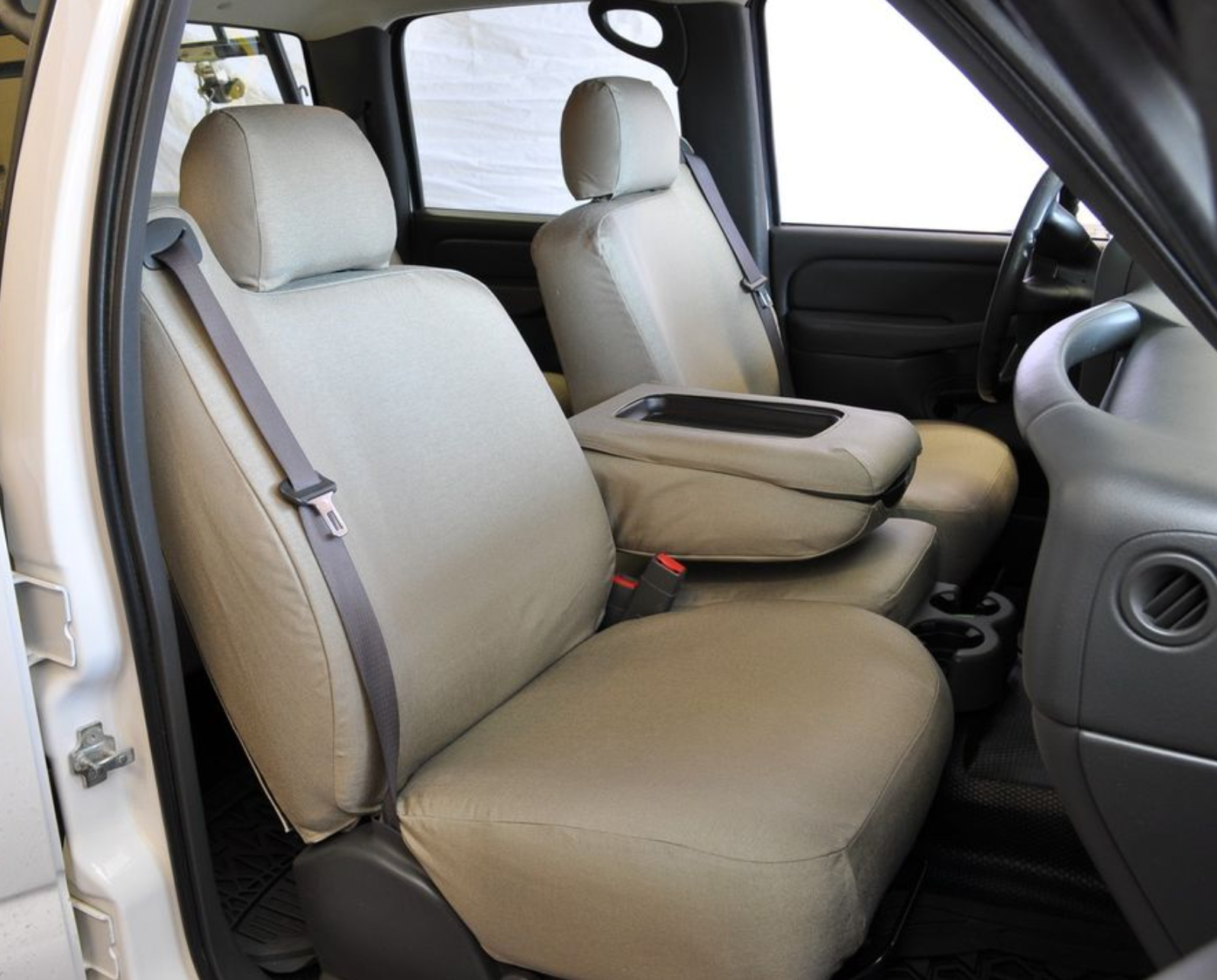
We'll just come out and say it: Marathon used to make a darn good seat cover. But since Covercraft bought them out, the quality has gone downhill. We did a side-by-side comparison of old vs new Marathon seat covers so you can see what we're talking about.
Their covers are made from 1000-denier CORDURA® and we'll take a look at their Excel covers for pricing comparison.
Price: $350
Pros
✅ Lots of colors
✅ Made from CORDURA®
✅ Waterproof
✅ Airbag safe
✅ Many customizable options
Cons
❌ Not made in America
❌ Reports of poor quality since switching manufacturers
Verdict
If you can find old Marathon seats, buy them. They'll be a great investment in protecting your truck.
Read Marathon vs. TigerTough Seat Covers
Canvasback

We won’t lie; we hadn’t heard of this brand until Ambre Schaffer, Marketing Director at Aggtrans, pointed them out. These seat covers are a one-size-fits-most style, so consider that when ordering. You won’t be getting a custom fit for your seats.
Canvasback seems to be best known for their cargo liners. Liners are custom fit for your vehicle’s cargo space and attach with hook and loop.
Ambre confirms the durability and easy installation, “[the cargo liner] is custom fit to your specific vehicle and velcros right in place. They've been installed for three years without budging or showing any signs of wear. If I needed to remove them, they'd pull right up.
"In addition to carrying around all of my photography/videography gear and field gear for construction, I'm a search and rescue handler with a k9. We're usually covered in mud and debris.”
With a review like that, we had to include this option.
Price: $150
Pros
Durable cargo liners customized to fit most vehicles. Despite not having custom-fit seat covers, the covers are at the bottom of our price range at $140 for a pair of bucket seat covers. On top of all this, Canvasback is woman-owned, and we think that’s pretty cool.
✅ Inexpensive
✅ Fits most vehicles
✅ Woman-owned company
Cons
❌ Not custom fit
❌ Limited six-month warranty
Verdict
We probably wouldn’t put these in a work truck to protect the seats, but we like the cargo liner options. If you’ve got a dog or use your cargo space a good deal, we’d suggest looking into Canvasback. Plus, we can’t help but love that they’re made in Minnesota.
ShearComfort CORDURA®

Like TigerTough, these covers are made from CORDURA®. It’s a slightly different kind, though. ShearComfort uses a heavy-duty 500 denier CORDURA® fabric, which isn’t as durable as the 1000 Denier CORDURA® we use. But this is still going to be a durable seat cover.
Price: $428
Pros
These airbag-safe seat covers are waterproof, durable, and guaranteed to fit perfectly. There’s a lot to love about them, and they’d perform well in a work truck.
✅ Waterproof
✅ Guaranteed perfect fit
✅ Airbag safe
Cons
❌ They don't use CORDURA® on their entire seat cover
❌ Price is a little high
❌ Limited Warranty
Verdict
They’re tough and built for hard work, but we don't love that ShearComfort doesn't use CORDURA® on the entire seat cover. They only use it on the portions you'd touch when sitting in the seat. The rest is made of a thin, stretchy material which will give out over time. They have great reviews from their customers. ShearComfort is a good option for your work truck, but not the best.
Read ShearComfort CORDURA® 1000 Denier Xtra-Duty vs. TigerTough Seat Covers
VERTEX OFF-ROAD

VERTEX OFF-ROAD is a newer company, started in 2021, and they specialize in truck seat covers. They consider themselves "American craftsman and enthusiasts committed to building top-quality products that help you upgrade and protect your truck for everywhere the road ahead takes you."
Well, what's not to love about that? Let's look at their 1000-Denier CORDURA® Canvas seat covers.
Price: $400
Pros
✅ Use CORDURA® nylon on their colvers
✅ Automatically include a center console cover
✅ Lifetime warranty, albeit limited
✅ Airbag safe
Cons
❌ Foam-backed seat covers (foam breaks down over time)
❌ Limited vehicle line
Verdict
We love that they're using CORDURA® nylon canvas for this particular cover. They also automatically include a center console cover and pockets for the seatbacks. They also have a lifetime warranty and seem pretty flexible, but it does exclude everyday wear and tear.
This is the first time we've run across another brand that uses a string to cinch around the seat for a secure fit. It's just too bad they don't use StringLock.
This seems like a great cover. These are going to be a durable option for your truck. And given that they come with a center console cover and seatback pockets, the price is fair for what you get.
TigerTough

TigerTough seat covers are designed for hardworking men and women. They’re extremely tough (hence the name).
We put our seat covers through torture tests. Do we do these tests for fun? Yes. Do we love proving how resilient these covers are with each test? Also yes.
Need more proof that we believe in our products? We have an unconditional warranty for at least two years on our products. They’ll get gross, they’ll get stained, but they won’t fail you, and neither will we.
Price: $317
Pros
✅ Unconditional warranty
✅ Custom fit
✅ Two-week turnaround
✅ Waterproof
✅ Airbag safe
Cons
❌ Limited colors
Verdict
These are some of the lowest-priced seat covers in this lineup, with an average 4.9 star rating from users. Everyone from parents to first responders uses TigerTough seat covers, and they’ve always risen to the occasion.
Of course we love our own seat covers (or we wouldn’t work here). But that doesn’t mean they’re best for you and your work truck. Look at all the options and choose the covers that fit you best.
Summary
Not all seat covers are created equally. Some will be better for you than others. We think you should have ones that:
- Are waterproof
- Easy to clean
- Have a great warranty and return policy
- Made in America
You don’t want to be stuck with seat covers that aren’t getting the job done. You want something that will last for years and ultimately save you money in the long run.
Look at the features of all these work truck seat covers and decide which one is best for you based on your needs and budget.
| Covercraft Endura PrecisionFit | Covercraft Carhartt SeatSavers | Wet Okole | Marathon | Canvasback | ShearComfort CORDURA® | VERTEX OFF-ROAD | TigerTough | |
|---|---|---|---|---|---|---|---|---|
| Cost | $334 | $379 | $402 | $350 | $150 | $428 | $400 | $317 |
| Star Rating | 4.5 | 4.6 | N/A | 4.5 | 4.9 | 4.6 | 4.7 | 4.9 |
| Warranty | 3 year limited | 3 year limited | 90 days | 4 year limited | 6 months limited | 2 years | Lifetime Limited | Unconditional 2 years |
| Material | Canvas-nylon-polyester blend | Duck Weave Cotton | Neoprene | CORDURA (unknown denier) | 600 X 300 poly denier | 500 Denier CORDURA® | 1000 Denier CORDURA® nylon canvas | 1000 Denier CORDURA®️ |
| Fit | Custom | Custom | Custom | Custom | Universal Fit | Perfect Fit | Perfect Fit | Perfect Fit |
| Waterproof | ☑️ | ☑️ | ☑️ | ☑️ | ☑️ | ☑️ | ||
| Airbag Safe | ☑️ | ☑️ | ☑️ | ☑️ | ☑️ | ☑️ | ☑️ | ☑️ |
| Made in the USA | USA and Mexico | USA and Mexico | ☑️ | ☑️ | ☑️ | ☑️ | ☑️ | ☑️ |
| Colors and Patterns | 32 | 2 | 40+ | 14 | 11 | 10 | 3 | 8 |
| Seatback Pockets | Yes | Yes | Optional | Optional | No | Yes | Yes | Optional |
Update on 07/06/2023: We Initially had WeatherTech Seat Protectors as part of this list but removed them when we found out they weren't considered airbag-compatible in all vehicles. Take a look at WeatherTech Seat Protector Review for more information.



